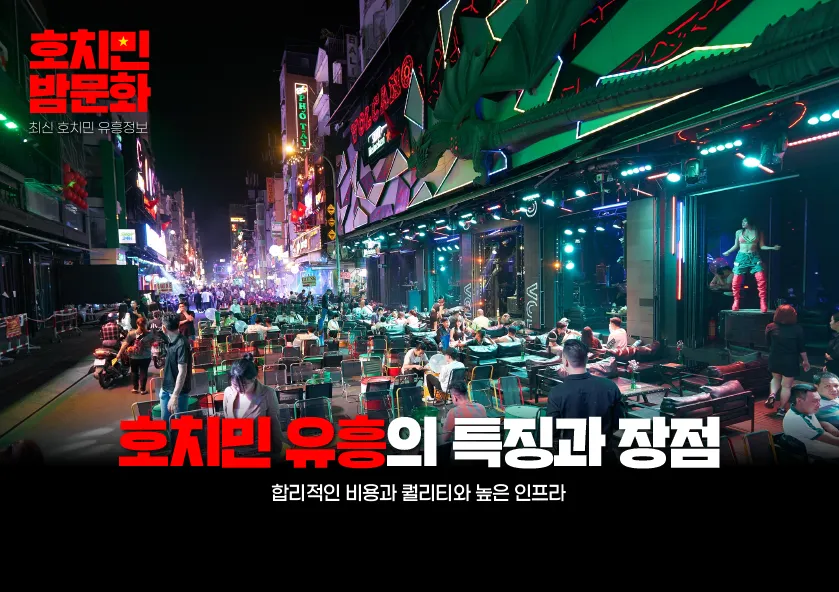20 Top Reasons For Deciding On Ho Chi Minh Karaoke Spots
20 Top Reasons For Deciding On Ho Chi Minh Karaoke Spots
Blog Article
The 10 Most Important Tips For Different Types Of Vietnamese Massage Services
Here are the top 10 strategies to help you comprehend the different types of Vietnamese massages. From traditional techniques to spa-like treatments that are luxurious They cover everything. Each massage type offers something distinct, whether your goal is deep relaxation or a foot massage that relieves pain, or refreshing.
1. Traditional Vietnamese Massage
Technique Techniques like acupressure, deep kneading, and stretching are the primary methods. This style relies on applying strong pressure along the energy lines within the body to reduce muscle tension.
What is to Expect? This may be intense if you're not used to firm pressure. However, it is highly effective in relaxing muscle tension and discomfort. Get ready for a mixture of pressure points as well as gentle twisting and stretching.
2. Hot Stone Massage
Technique Use a method of placing warm, smooth stones on specific points on the body. The heat penetrates muscles and helping to ease tension and stress.
What to Expect: It's a calm and relaxing experience perfect for those who enjoy gentle pressure. The warmth provided by the stones encourages the relaxation process and a sense of wellbeing without the need for excessive manipulation.
3. Foot Massage (Reflexology)
Technique: This technique involves stimulation of the pressure points on the feet. These are thought to correspond with the various organs, systems and parts of the human body.
What to Expect: A foot massage in Vietnam often will include an upper leg massage as well as a soak in warm, herbal water. This is a fantastic alternative for those who are always on the move.
4. Herbal Compress Massage
Technique Application of herbal compresses made of a mix of local herbs and spices on the body. The herbs could provide therapeutic properties.
What to Expect : The warmth of the compresses will help soothe muscle aches. It also helps decrease inflammation and boost circulation. This holistic treatment blends traditional massage techniques with natural remedies.
5. Aromatherapy Massage
Technique: Uses essential oils that have been selected for their therapeutic qualities and then massaged into the body.
What to Expect It will be a relaxing and light experience. Most commonly, essential oils are used such as lavender (for relaxation), lemongrass (for energy), and eucalyptus for respiratory relief.
6. Swedish Massage (Western Influence)
Technique: A relaxing, gentle massage that uses long and circular strokes. It's a very popular technique that has been influenced from Western techniques.
What to Expect: It's ideal for those who want a soft, relaxing experience that isn't a lot of pressure. It often concentrates on the entire body, focusing on reducing stress and improving overall wellbeing.
7. Shiatsu Massage (Japanese Influence)
Technique: involves applying pressure with fingers and palm pressure to specific points on the body. It is similar to acupuncture, however with no needles.
What to expect: The pressure is firm and not uncomfortable. This is ideal for people who want to increase their energy flow and balance. Some Vietnamese spas include elements of Shiatsu particularly in more expensive venues.
8. Four-Hand Massaging
Technique Two therapists are working simultaneously to provide synced strokes. Doubles the intensity and relaxation of traditional massage.
What to anticipate: This deluxe exclusive treatment is usually provided by mid-range to high-end luxurious spas. It can be like a swell at first because of the intenseness, but it's extremely effective for total relaxation.
9. Thai Massage (Thai-Vietnamese Fusion)
Technique: A blend of assisted stretching and deep tissue massage. The therapist uses their elbows, hands, as well as knees to apply pressure.
What to Expect: It's a physical type of massage, involving lots of stretching, pulling, and pressure. Certain Vietnamese spas employ a mix of Thai techniques as well as local acupressure.
10. Luxury Spa Packages
What to Expect: High-end hotels and resorts typically provide spa packages that blend various types of massages with additional treatments like body scrubs, facials or baths. These packages are ideal for those looking for to experience a full-on pampering.
The best place to go: The Reverie Saigon Spa is the ideal choice to enjoy a relaxing spa day that includes multiple treatments.
Vietnamese Massage Services â Tips to have a better experience
Make sure to communicate your preferences. Before you begin your massage, be sure to communicate any preferences that you may have regarding the level of pressure (lighter, medium or stronger) as well as the areas of focus, and areas to stay clear of. Most massage therapists will alter their approach to accommodate your level of comfort.
Proper Attire and Draping: In numerous spas, you'll be offered loose-fitting clothing or a robe to enjoy traditional Vietnamese and Thai massages. In more upscale spas, towels can be used to cover the body in order to provide peace and privacy.
Tipping Etiquette. Tipping might not be mandatory but it's valued, particularly at massage parlors that have a budget. A tip of 10-15 percent will be appreciated.
Conclusion
Vietnamese massages are available in a variety of styles that can meet your needs, from deep tissue massage to luxurious relaxation. Knowing the distinctions between these therapies will enable you to select the appropriate one for your level of comfort and relaxation demands. Read the top í¸ì¹ë¯¼ 밤문í for blog info.
Vietnamese Street Food In Market Nights, Trendy Restaurants And International Cuisine: 10 Tips
Vietnamese cuisine is known for its vibrant flavors and fresh ingredients. Options range from street food in bustling markets to stylish eateries, as well as international cuisines that have a Vietnamese spice. It is possible to make the most of your culinary adventure by following these top ten tips for your next meal, whether you opt to dine at night market trendy eateries or try international cuisine.
1. Embrace Street Food Culture
Street food is a fundamental element of Vietnamese culture--and the best way to enjoy it is at local market nights or at street stands. It is a must to taste Vietnamese food items like banh m (a Vietnamese sandwich), Pho, (noodle soup), or bun cha.
Start by visiting famous night markets in Hanoi or Ho Chi Minh City like Ben Thanh Market.
2. Learn the Essential Street Food Dishes
It's easier to navigate street food and menus better if you are familiar with the names of some popular Vietnamese food items. Try these key dishes:
Banh Xeo (savory Vietnamese pancakes)
Goi Cuon (fresh spring rolls)
Bun Bo Hue - spicy beef noodles from Hue
Cao Lau - Pork Noodles (Hoi An)
Che (Vietnamese sweet dessert soup)
3. Discover authentic experiences and cheap prices at Night Markets
The night markets are a riot and offer a variety of local items such as food, souvenirs, and other souvenirs. They are great for sampling affordable street food and getting an insight into the local culture.
Popular markets like Hanoi's Weekend Night Market, Da Nang's Helio Night Market, and Hoi An Night Market are known for their local food and stalls selling street food.
4. The best street food is those that locals choose.
When choosing an eatery on the street, follow the locals. If there's a long line or a crowd of locals at the stall, it usually means that they are serving quality food that is fresh and of high-quality.
You can check whether the food is freshly prepared by watching how it's prepared. Don't be afraid to ask other travelers for recommendations or to talk to locals.
5. Learn the Basic Vietnamese Phrases to have a better Experience
It's not necessary to know Vietnamese fluently in order to go to the market or eateries with a smaller menu. Phrases like "Bao nhieu tien?" (How much?) You can make a reservation for food using phrases such as "Cho toi ...", (Give one of ...)), or "Bao nhieu?"
The staff may not speak fluently in English however, they're generally patient and willing to help you with your menu.
6. Modern Vietnamese Cuisine can be found in trendy restaurants
Vietnam's cities have a growing number trendy restaurants, which give a fresh take on traditional cuisines. Restaurants that incorporate the latest techniques of fusion or top-quality ingredients to offer classic dishes a modern twist.
The Deck Saigon and Secret Garden in Ho Chi Minh City are two restaurants serving Vietnamese food in an innovative setting.
7. Sample International Cuisine With an Vietnamese A Touch
Vietnam's food scene is a blend of international flavors as well as local flavors. There are Japanese, French, Korean, as well as Italian restaurants that use Vietnamese ingredients, spices or techniques.
Don't miss out on the Vietnamese-inspired pizza, fusion sushi, or French-inspired bakeries with local ingredients like lemongrass and chili.
8. Be sure to keep your hygiene and cleanliness in your mind
If you want to consume street food, look for vendors that prepare the food directly in front of you. Avoid stalls with food sitting out for long periods, especially in the heat of summer.
If you're concerned about the food safety it's a good idea to check reviews on the internet.
9. Visit local markets for ingredients and Cooking Classes
If you're looking for the ingredients that are used in Vietnamese food, make sure to visit local markets such as Ben Thanh Market, Dong Ba Market, or Hanoi's Long Bien Market. These markets allow you to purchase fresh fruits and spices and meats.
A few trendy restaurants and hotels offer cooking courses where you can make Vietnamese dishes using ingredients from the local area. It's a fantastic option to bring home some of the flavors.
10. Drink locally-produced beverages to accompany your meals
Combining your meals with local beverages can enhance the dining experience. Vietnamese Iced caffè (Caphe suada), sugarcane, or local beer such as Bia Saigon, Hanoi Beer and many more are very popular.
There may be trendy bars serving drinks made with local ingredients like passionfruit or lychee. Exploring these drinks is a great way to cool off and have fun.
Vietnam Cuisine: Bonus Tips
Ask for sauces and herbs: Vietnamese dishes often come with a range of sauces and herbs like nuoc-cham (fish sauce based dipping sauce) or chili paste. Ask for more sauces and herbs in case you would like to personalize the flavor.
Don't skip the street food treats. Vietnam is home to many sweet treats worth trying including Banh Flan (Vietnamese Flan) to local ice creams. Night markets are the best place to find these sweet snacks.
Conclusion
The Vietnamese culinary scene is varied. It is home to the best street food to trendy and international dining experiences. Learn these tricks to help you navigate Vietnamese markets at night explore the local cuisine and enjoy the unique flavors which create Vietnamese food unique. Vietnam's cuisine has many options for anyone, regardless of whether you're an avid foodie or simply looking for delicious food. View the recommended í¸ì¹ë¯¼í¬ë¡ë°¤ for blog info.